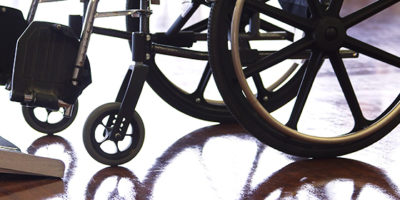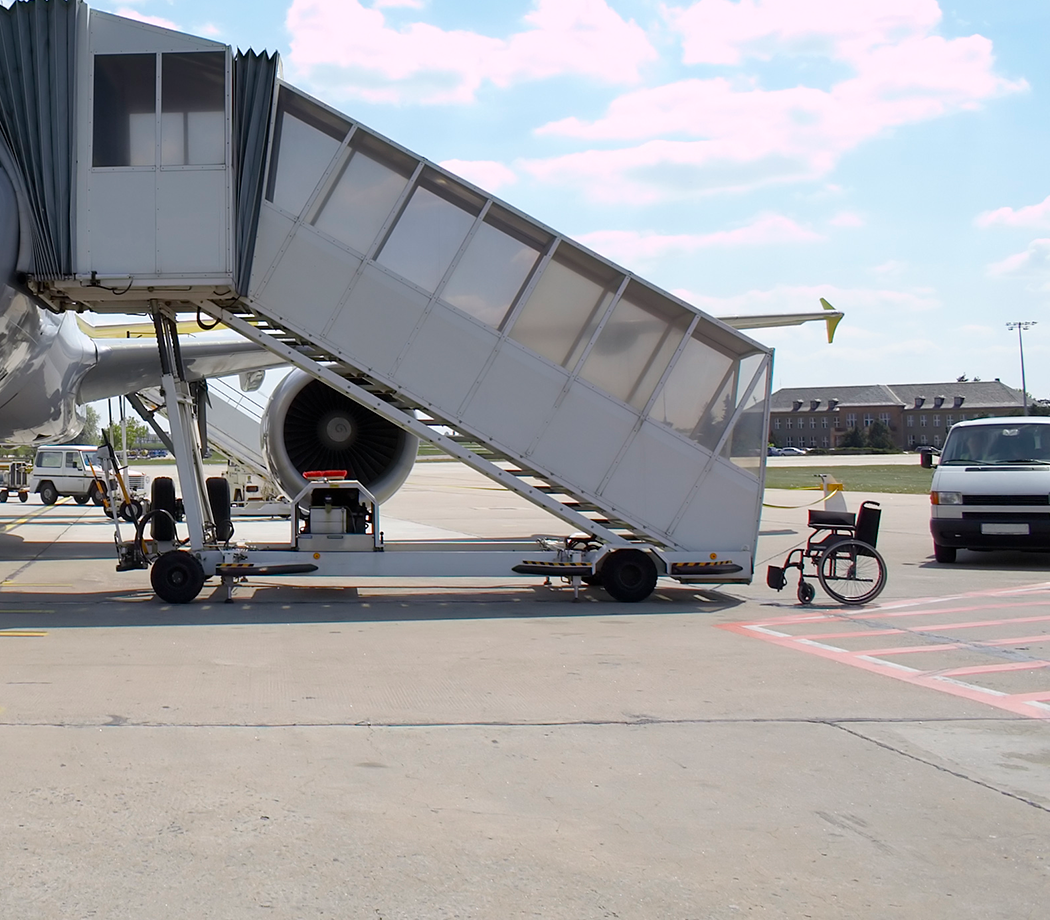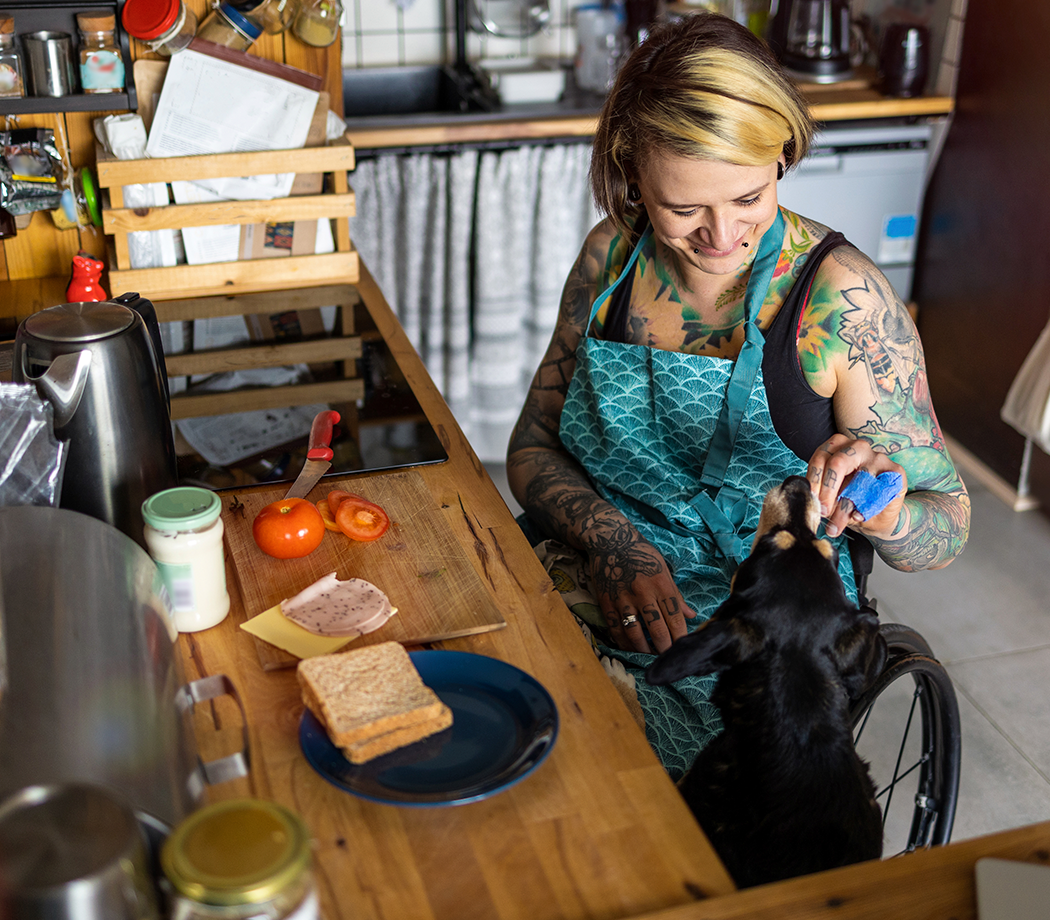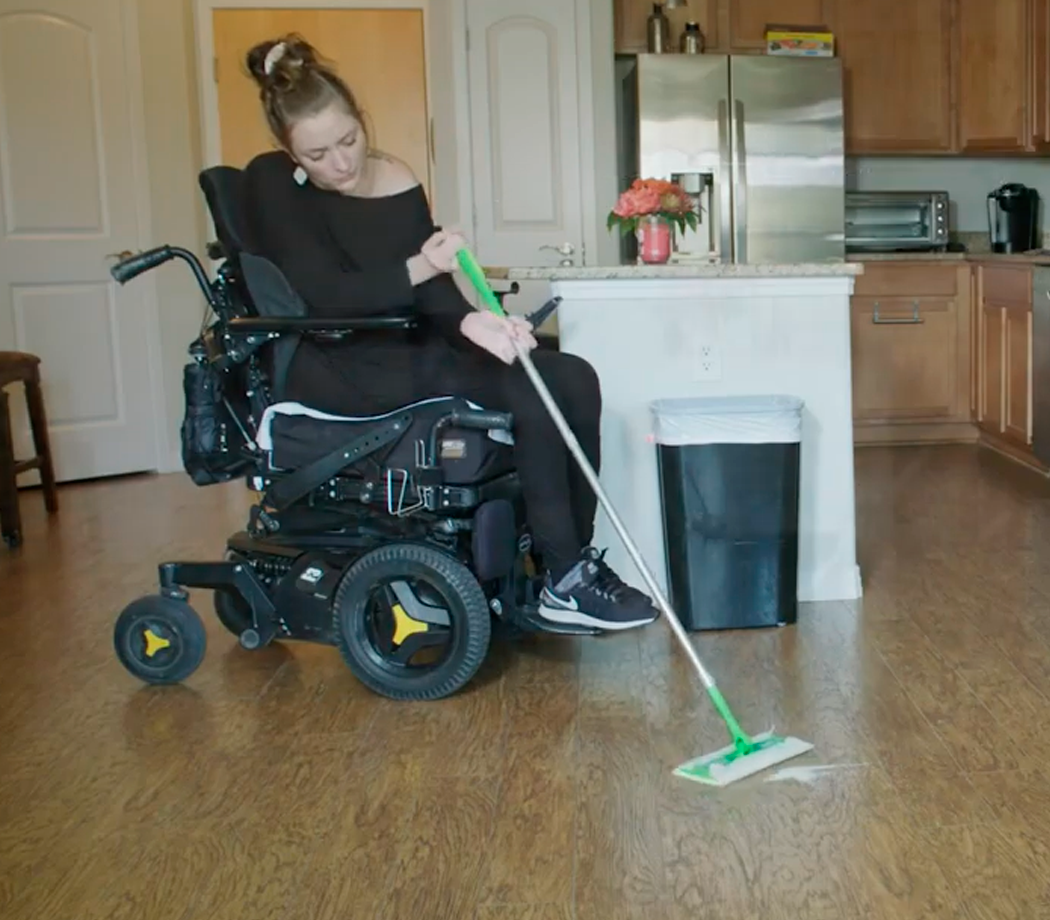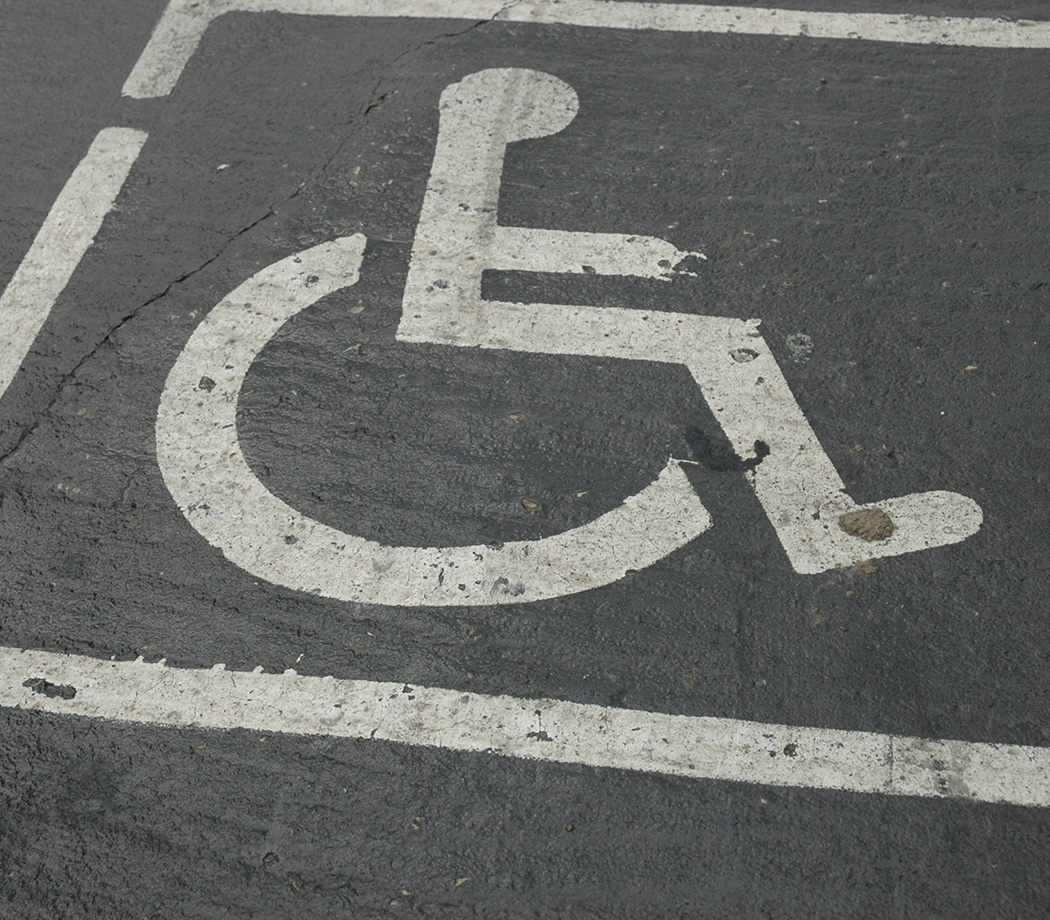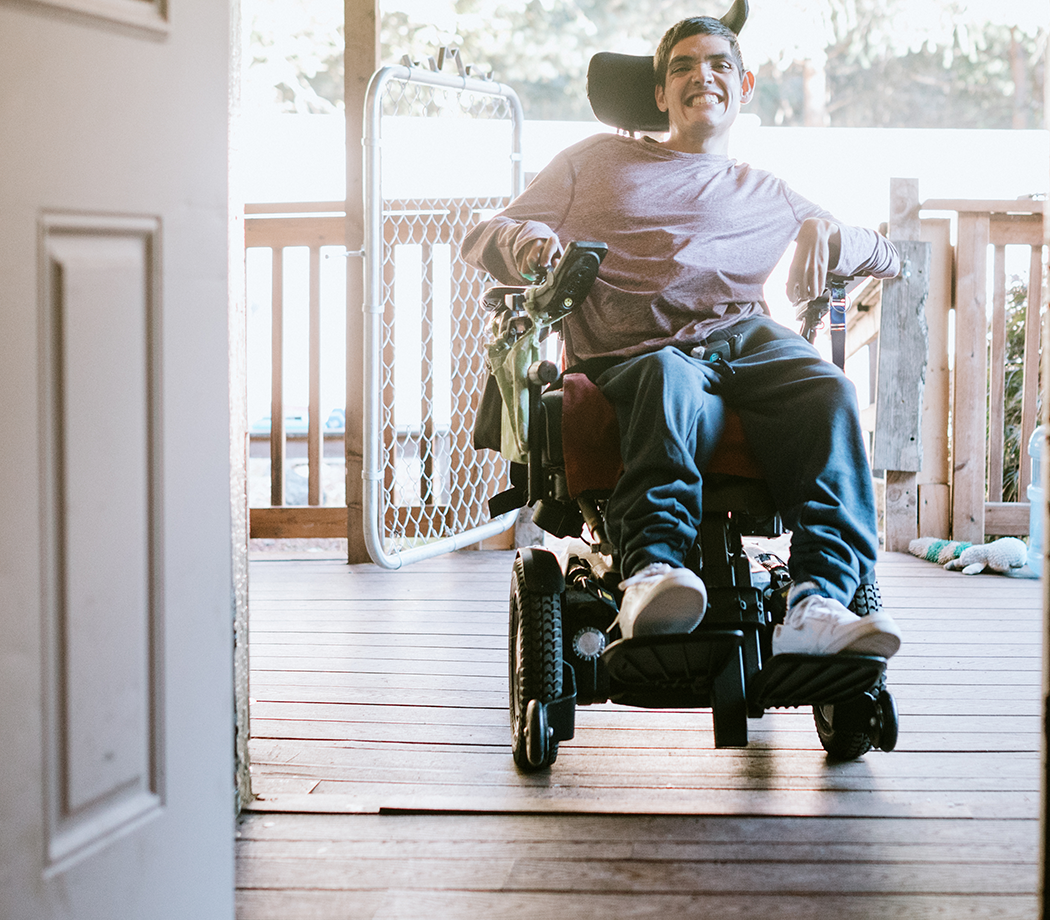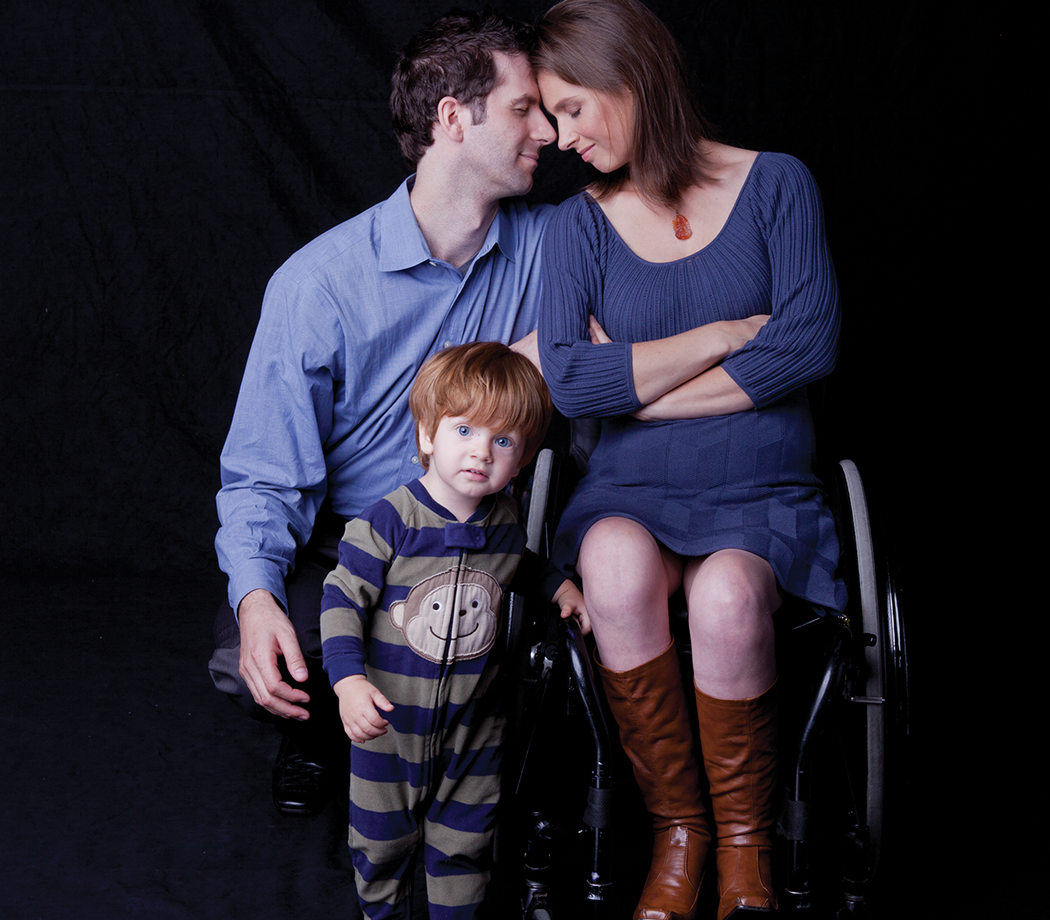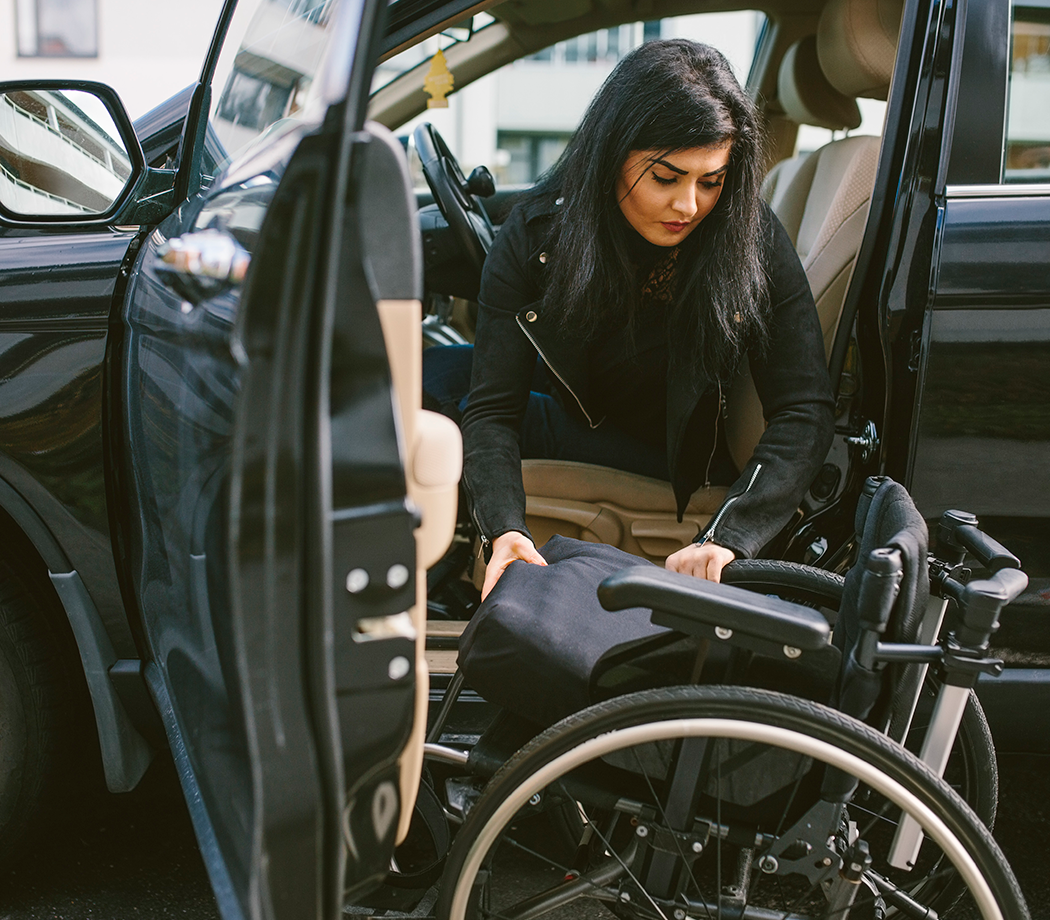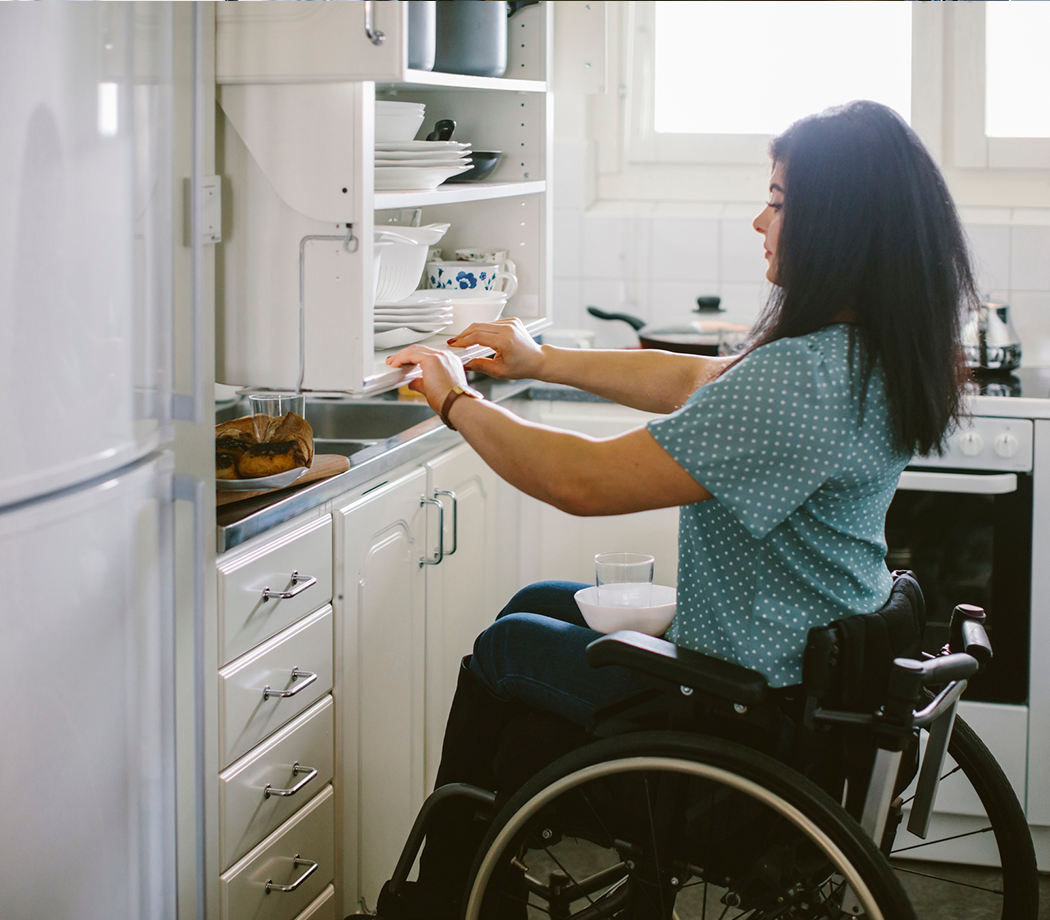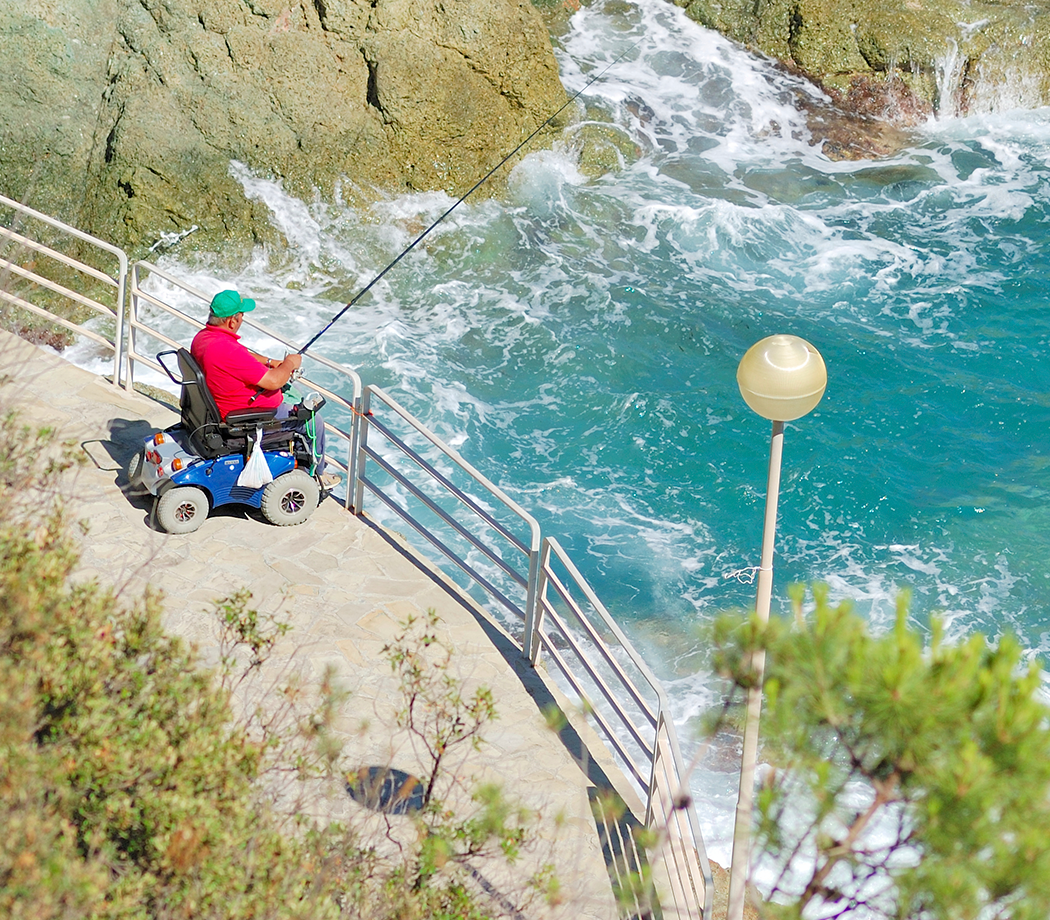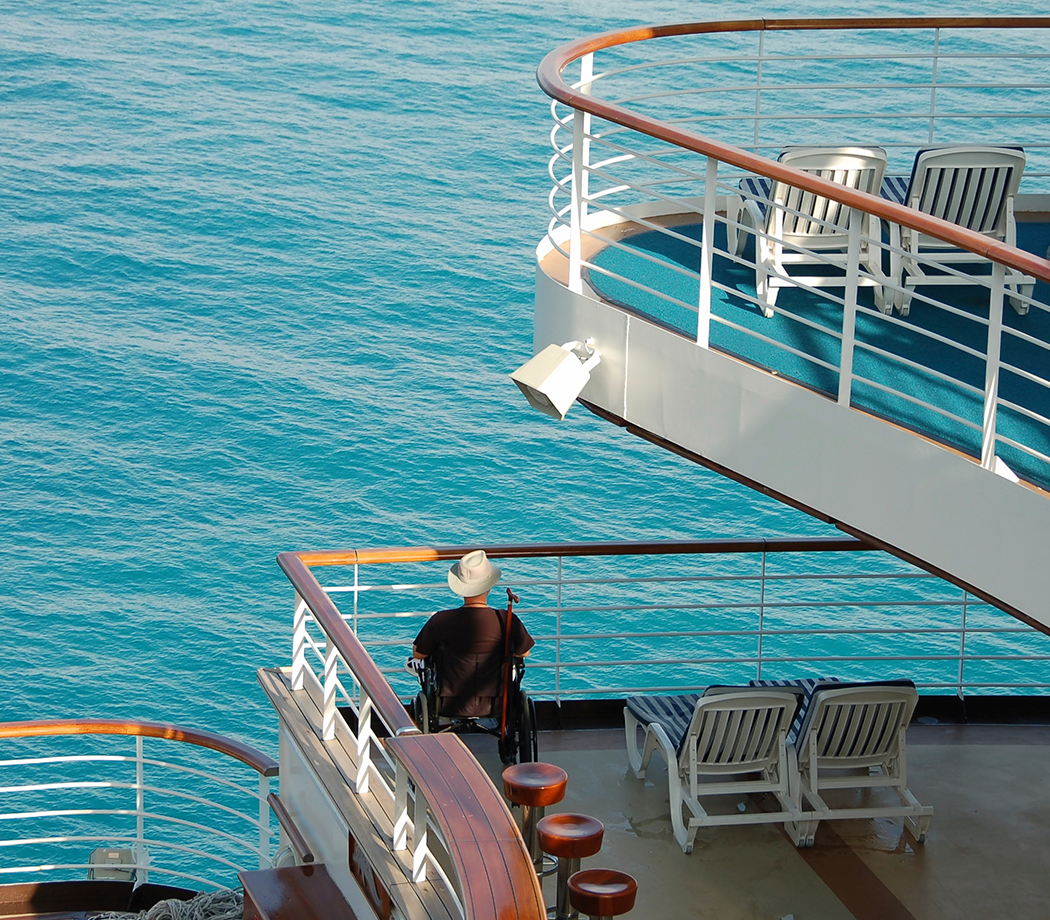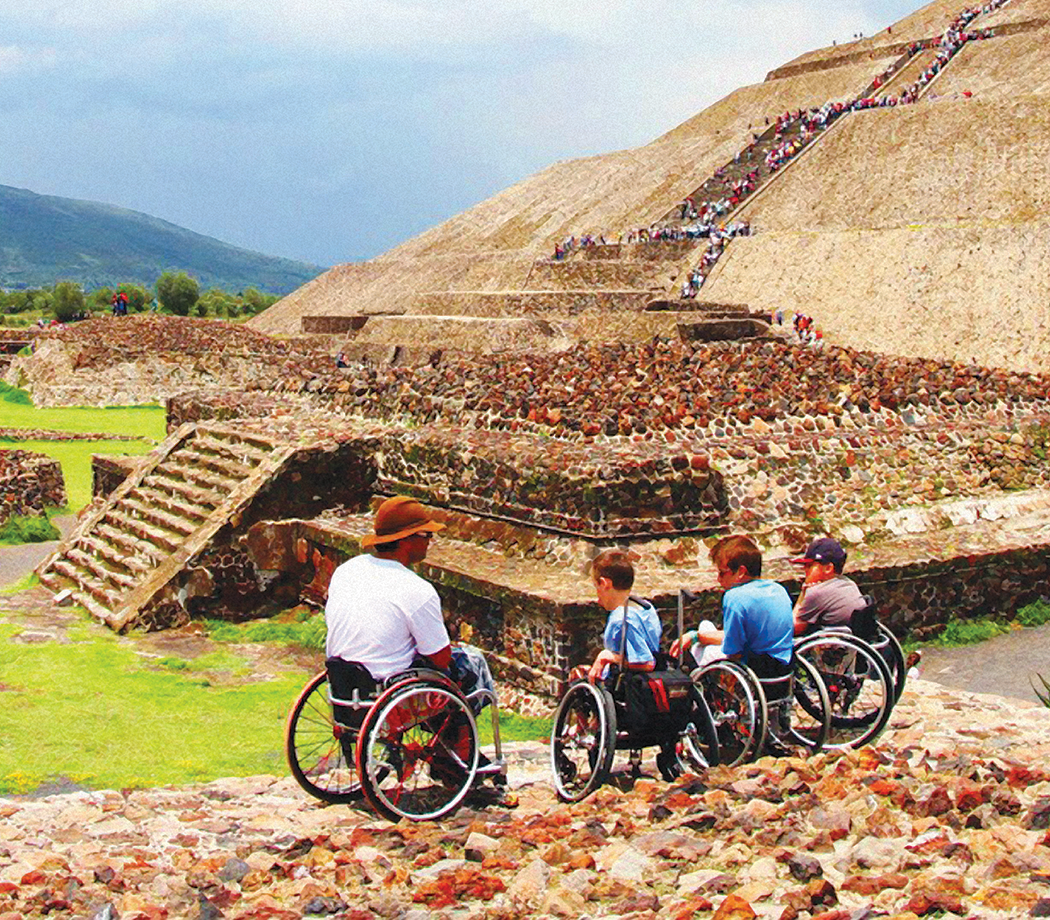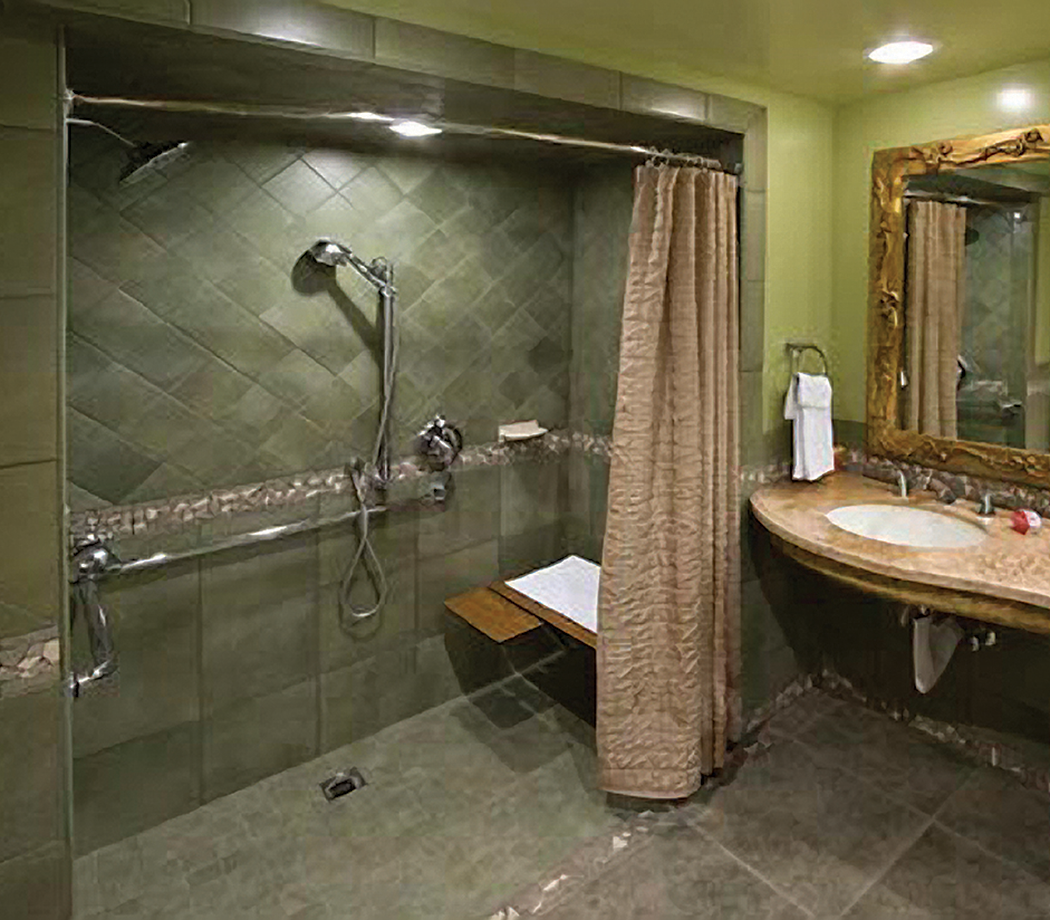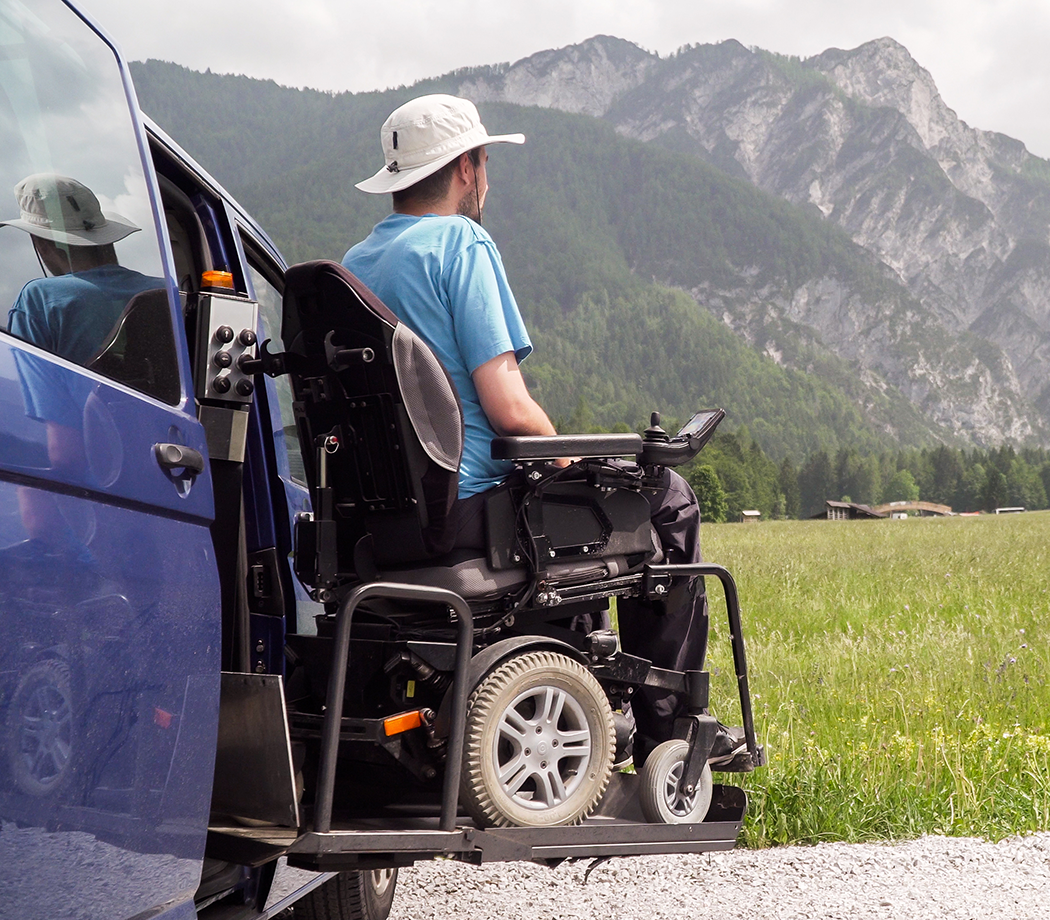Traveling With Your Wheelchair
We asked four wheelchair travelers to tell us all about the ups and downs of their trips around the world, and provide some tips to keep in mind for your next adventure.
Cruises
“Cruising is probably the most accessible way to travel,” says James Glasbergen, Director of Accessible Travel for Frederick Travel Waterloo and living with quadriplegia (C4). “There are a few cruise lines in particular that tend to be more accessible; Royal Caribbean and Holland America, and the reason is tendering.”
When ships have to anchor at sea, they use small boats called tenders, to bring passengers on shore. When cruise lines don’t have accessible tenders, wheelchair users, especially an electric wheelchair user, may be stuck on the ship for the day.
“Holland America has a tender lift they use to get wheelchair users onto the tenders,” says Glasbergen. “Royal Caribbean has ramps they use to get from the ship onto the tender.”
Glasbergen adds most major cruise lines, such as Celebrity, Princess and Norwegian, have very good access on board.
When traveling in general, Glasbergen advises to get detailed confirmations in writing. “If I’m booking a hotel with a roll-in shower,” explains Glasbergen. “I’ll always email the hotel and get in writing that they will get me an accessible room with a roll-in shower. A lot of times when you call to get reservations, the phone operators don’t really know what the hotel does or doesn’t have.”
Mike Murphy, a Team Reeve alumn living with paraplegia (T9), went on a five-day Royal Caribbean cruise. “The cruise itself was incredibly accessible,” explains Murphy, who uses a manual wheelchair. “I did a lot of the cruise planning. The people I dealt with were wonderful and the room was perfectly accessible. The bathroom was big enough, I had a seat that folded down in the shower, and there were no problems in the room. There was only one section on the deck that had stairs, but my friends pulled me up.”
To wheelchair users who have considered a cruise, Murphy says, “If anyone is skeptical, thinking boats are small and confined, that’s not the case at all. It’s definitely a wonderful experience.”
Traveling by Air
A law under the United States Code of Federal Regulation, U.S. Title 14 CFR Part 382, provides safeguards to prevent discrimination against passengers on the basis of their disability.
Though airlines are not allowed to require advanced notice to make assistance available to a passenger living with a disability (except in very specific cases, such as needing to use therapeutic oxygen on the aircraft) it is still in the best interest for you to inform the air carrier of any needs ahead of time.
Travel agent and wheelchair user James Glasbergen advises contacting the airline well in advance of your departure. “Make sure they are aware of anything extra you may require,” says Glasbergen.
When you get to the check-in counter, be adamant with the agents that you want to sit in your own wheelchair right to the gate. Sometimes they want to take it as early as possible to save some time. But you don’t have to.
Carriers report annually to the U.S. Department of Transportation, who in turn reports to Congress on disability-complaints received by airlines. In general, the highest complaint from passengers with disabilities is “failure to provide assistance in timely manner.”
“Truthfully, some of that has to do with expectations,” according to Heidi MacFarlane of MedAire, an aviation and maritime medical services company. “For example, even though you’re not required to request wheelchair assistance in advance, if you arrive at the gate and five other people requested a wheelchair and you didn’t, there will be five wheelchairs there. They will get the five and you’ll have to wait to get the sixth. It goes both ways.”
Understand Both Sides
“Airline employees serve many masters,” says MacFarlane. “Sometimes their motivation can be misperceived.”
For example, airline employees may be hurrying a passenger because they need to get a flight out on time, not because the passenger is an inconvenience. The employee is trying to give the best service and achieve their goals.
“Be sensitive to the environment, and know the airline employees have their own stresses just like travelers,” says MacFarlane. “Over-communicate to airline personnel and be very specific with what you ask for. There are rules to comply with and limits to the airline employees’ responsibilities.”
“If a passenger needs to stop and use the facilities,” says MacFarlane, “then the airline employee is required to stop and allow them to do that, as long as it doesn’t significantly delay the flight. They can take the passenger into bathroom and that’s it.”
“I’ve had so many times, when I was a gate agent, where we got into bathroom and passenger said, ‘I need help getting in the stall, with my pants.’ It’s really actually unfair for the passenger to expect that of me. But as a human, I wasn’t about to walk away.”
Be Comfortable
On the plane, MacFarlane recommends choosing a seat that is most comfortable to you. “Airlines are not allowed to require you to sit in certain seat,” explains MacFarlane. “They are allowed to restrict you from seating on the basis of safety. They might assume you want bulkhead seating for more space. If this is not what you want, or don’t want an aisle seat, tell them. Request that preference.”
MacFarlane notes that on most aircrafts, 50 percent of aisle seats are required to be equipped with moveable armrests in order to perform a lateral transfer from chair-to-chair. “It’s a good idea to ask in advance for seating in a row with a movable armrest if that’s necessary.”
Access to Restrooms During a Flight
While in flight, “every aircraft equipped with more than 60 seats and an accessible lavatory is required with an on-board wheelchair to facilitate transit to and from the lavatory,” explains MacFarlane. “If an individual has any immobility, they should be able to use lavatory. On wide bodied aircrafts, they are required to have an accessible lavatory. Request seating in advance that is close to the accessible lavatory.”
Though access to bathrooms is available, MacFarlane often hears of individuals who will not hydrate themselves to avoid the on-board lavatory. “The environment on board an aircraft is rather dry by itself,” says MacFarlane. “If you board an aircraft dehydrated, things can get very difficult from there and can cause medical problems. Be very careful with hydration and consider what steps you’re taking to avoid using the lavatory that could create medical issues.”
Book a Safari
Having gone to Africa twice before his accident in 2007, Murphy was thrilled about going back for a two-week safari adventure in Kenya.
Two years into the planning of the safari, Murphy was injured. There was a lot of concern about whether he would still be able to go. In the end, he said it worked out great. While on the safari, Murphy would transfer into the front seat of the safari vehicle, and his wheelchair would be put in the back.
When not staying at one of two tented safari camps, Murphy and fellow travelers would stop at other lodges. “With us the whole time, were a lot of Samburu and Maasai warriors,” says Murphy. “They were there from the second I woke up, until the minute I went to bed.” Those two warriors came in handy, as they pushed Murphy through sand and dirt by the dry river beds.
Murphy, acknowledges the difference between being in a manual or power wheelchair. “For someone in a manual wheelchair,” says Murphy, “who is physically fit like myself, or who had others assisting them, it wouldn’t be a problem going through the sand.”
Traveling to London
In 2007 at the age of 13, Arielle Rausin, living with a T11 level injury, traveled to London, Paris, Switzerland, and Rome with her family for three weeks.
“In London, there was this really cool taxi that had a ramp to get into the taxi,” explains Arielle. “I didn’t have to transfer out of my wheelchair. That made me want to move to London!”
Though Rausin enjoyed the taxi, her mother, Krista, can’t say the same about other public transportation. “The train in London was just not accessible,” says Krista. “There was a huge flight of stairs going up and we basically had my husband, Eric, carry Arielle up the stairs, and I would carry the wheelchair to the platform.”
In general, the train stations in Europe were not accessible. “They weren’t the most fun thing in the world. They had stairs, lots of stairs. And subway stations, too.”
Traveling to Paris
The next stop on their trip was Paris. “London was probably the easiest, because when we got to Paris, there were even tinier streets,” says Krista. “The streets were harder for Arielle, so Eric had to push her manual chair. If she would have had a power chair, it would have been easier for her.”
Both the Rausin family and Mike Murphy highlighted the accessibility of the Eiffel Tower. “There was an elevator and platforms around the Eiffel Tower,” explains Krista. “Arielle could go anywhere on there. It was a bit harder for her to see the view because of the walls, but she could still see.”
Murphy acknowledged how people went out of their way to help him. “There were three-hour-long lines at the Eiffel Tower,” says Murphy. “I was ushered, with my sister and brother, to a special entrance.”
“People were extremely helpful no matter where we were,” says Krista. “I remember when we were in Paris, within the subway, people would just grab the side of the wheelchair (to help Arielle), and not even look at me or say a word.”
An Elevator in the Coliseum
The Rausin family also visited Rome. “The Coliseum was accessible,” explains Krista. “But right next to the Coliseum are some ruins that you can go to, but it is a cobblestone path. We pretty much said we’re doing it. Eric carried Arielle, and I carried the wheelchair.”
Travel expert James Glasbergen notes how accessible the Coliseum is despite how long ago it was built. “The Coliseum is over 2000-years-old,” says Glasbergen, “and is fantastic for accessibility. There’s a very modern elevator inside of it that can go to the upper level and go all the way down.”
In addition to traveling to the Caribbean, Kenya, and London, after his injury, Mike Murphy also traveled to Rome. Though he loved Rome, he agreed that because of the cobblestone streets, it wasn’t entirely accessible. “Places like Rome have streets that were really dirty,” explains Murphy, a manual wheelchair user. “I wear fingerless gloves, so I ended up having to tape my thumbs, because I put my thumb on wheel itself, and it would just get black.”
Arielle recommends not traveling by yourself. “It think it would be smart to travel with someone,” says Arielle. “There are a lot of obstacles.”
Though as James Glasbergen notes, it depends on your level of mobility. “For people who need assistance,” he explains, “I always recommend they bring their personal care attendant from home rather than hire one. It’s more expensive, and you just never know what you’re going to get.”
Wheelchair World Traveler
Scott Chesney, a motivational speaker living with paralysis (T7), is a two-time wheelchair world traveler based in New Jersey. First in 1997, Chesney traveled to 15 countries in 15 months; then in 1999, he traveled to 26 countries in one year.
“I wish that every city could host the Olympics,” says Chesney, recognizing the effect of having the Games. “Once your city is chosen to host the Olympic Games, obviously they host the Paralympic Games.” That commits cities to making their streets and venues accessible. “Then the local workers are trained in disability awareness and disability etiquette. It’s amazing.”
However, Athens, Greece is apparently the exception to his theory. “There was so much resistance from the cab drivers,” says Chesney. “It was awful. I actually hid behind cars and my wife would flag down a cab. They’d open the door, I would literally have to jump in, and they would have to take me.”
When traveling, Chesney assures the best thing to do, is simply to talk with those who have traveled. “Don’t reinvent the wheel,” says Chesney. “Reach out to those who have done it. Pick their brains. This is the beauty of the Internet. Connect with people in other countries. Find out what is accessible and what’s not.”
“You have to be your best advocate with the information you gather,” says Chesney. “You have to do due diligence with the tiniest things. And don’t look at it in terms of being overwhelmed and saying you’re not going to travel. No, you’re just giving yourself peace of mind, that’s all.”
Be an Advocate
“People who are traveling,” explains Krista Rausin, “need to keep advocating for themselves.”
Numerous times during their travels, Krista called ahead to make sure the airline officials were aware that her daughter, Arielle, needed a straight-back chair, which is an L-shaped chair on two wheels that is used to wheel the passenger to her seat, where she is then transferred. Unfortunately, Krista and Arielle still had to make certain airlines aware, they have still run into problems.
Scott Chesney says he is hoping to facilitate change for other wheelchair users. He doesn’t ask to receive a complimentary room if a hotel room turns out to not be wheelchair accessible, but rather he wants to educate the management.
“That’s being an advocate,” insist Chesney. “You want to do what you can for yourself, but you also want to pave the way for the next person.”
As with all adventures and traveling experiences, it is important to have fun. Krista has one main piece of advice. “Smile a lot. Just smile at people, they get more relaxed and more willing.”
Resources
If you are looking for more information or have a specific question, our Information Specialists are available business weekdays, Monday through Friday, toll-free at 800-539-7309 from 9am to 8pm ET.
Additionally, the Reeve Foundation maintains a fact sheets with additional resources from trusted Reeve Foundation sources. Check out our repository of fact sheets on hundreds of topics ranging from state resources to secondary complications of paralysis.
We encourage you to reach out to support groups and organizations, including:
- Emerging Horizons is an accessible travel magazine covering news, resources and travel tips.
- Environmental Traveling Companions offers outdoor adventures.
- Mobility International USA has programs to increase the participation of people with disabilities in international exchange programs.
- Special Needs Group provides equipment rentals, including scooters, wheelchairs, powerchairs, oxygen, patient lifts, hospital beds and more. Equipment is delivered to cruises, hotels, convention centers and other requested locations.

